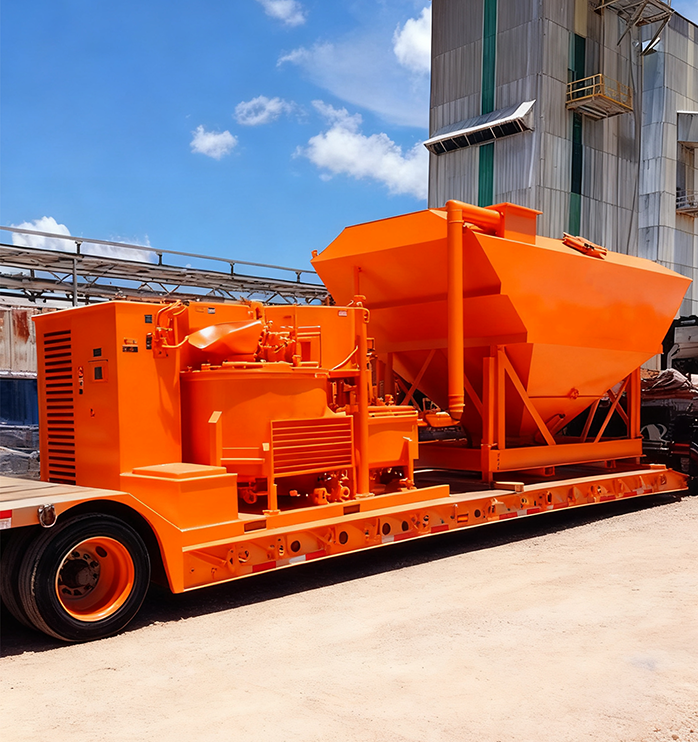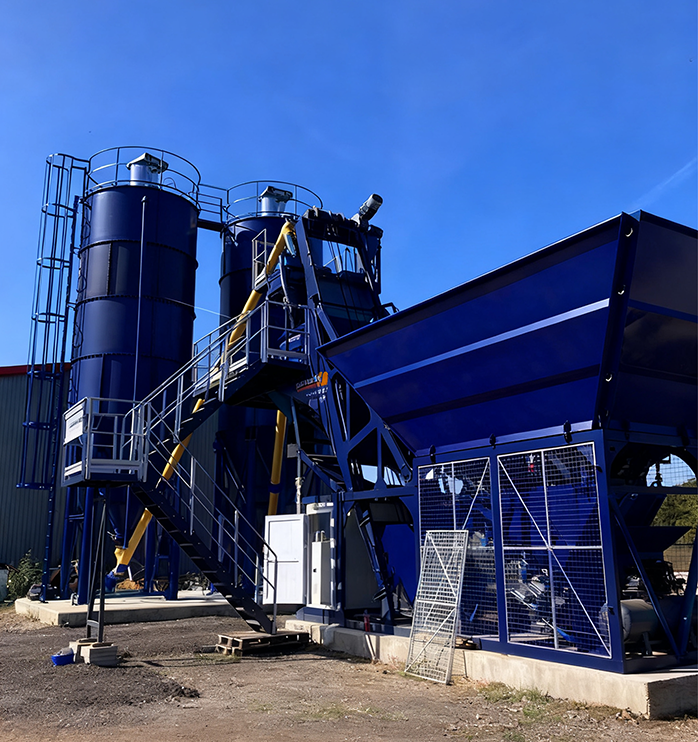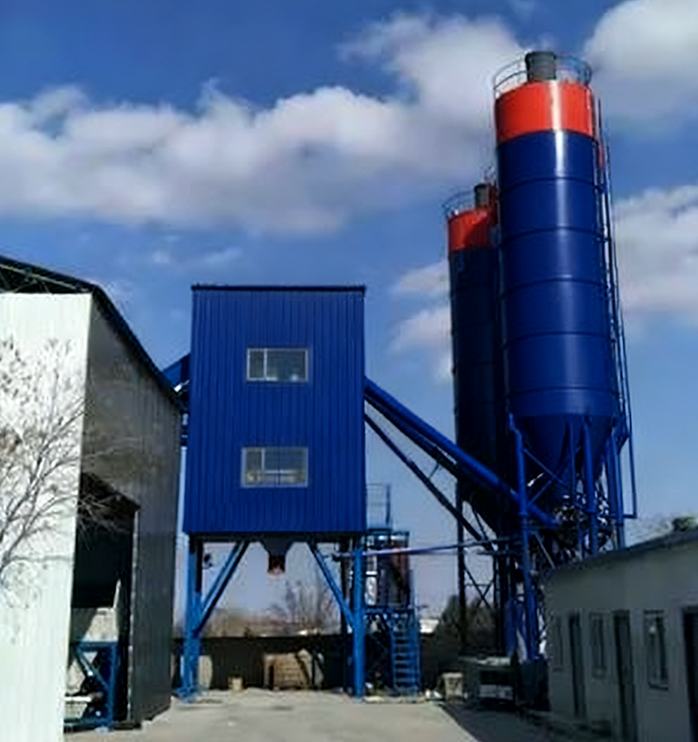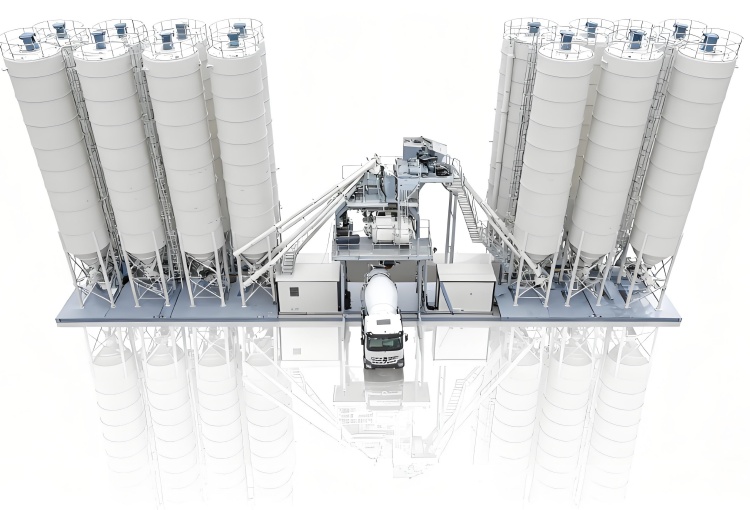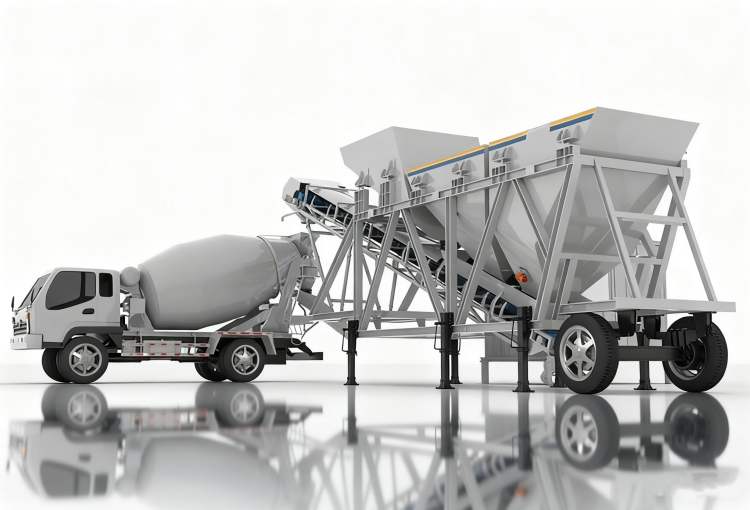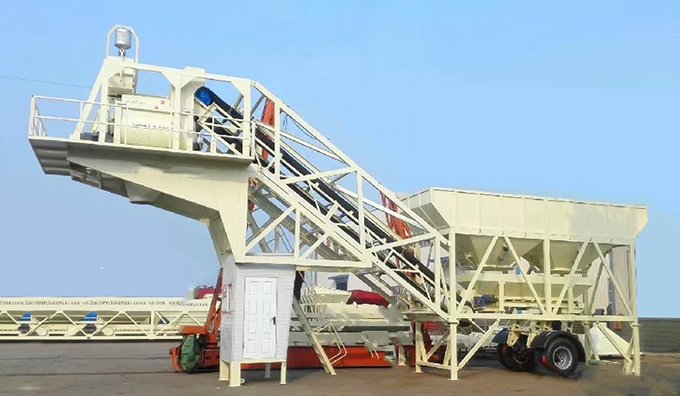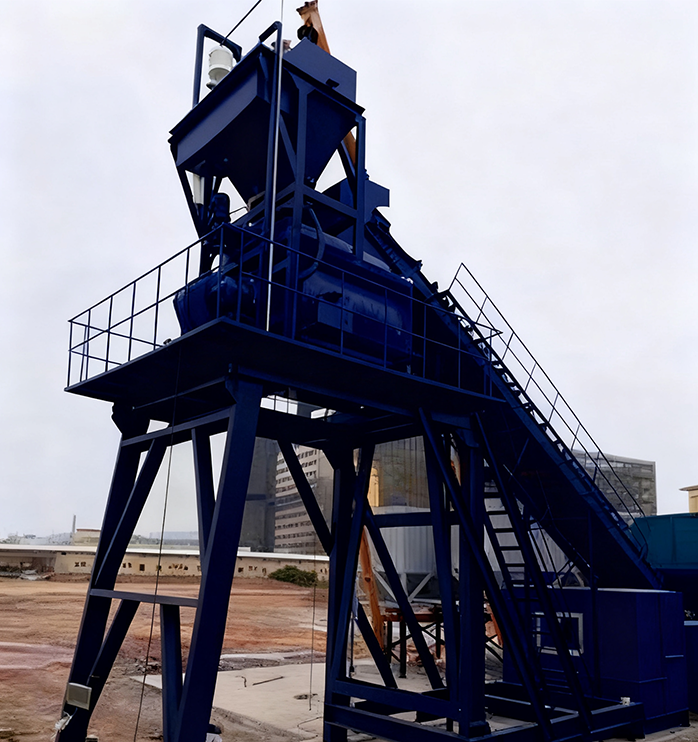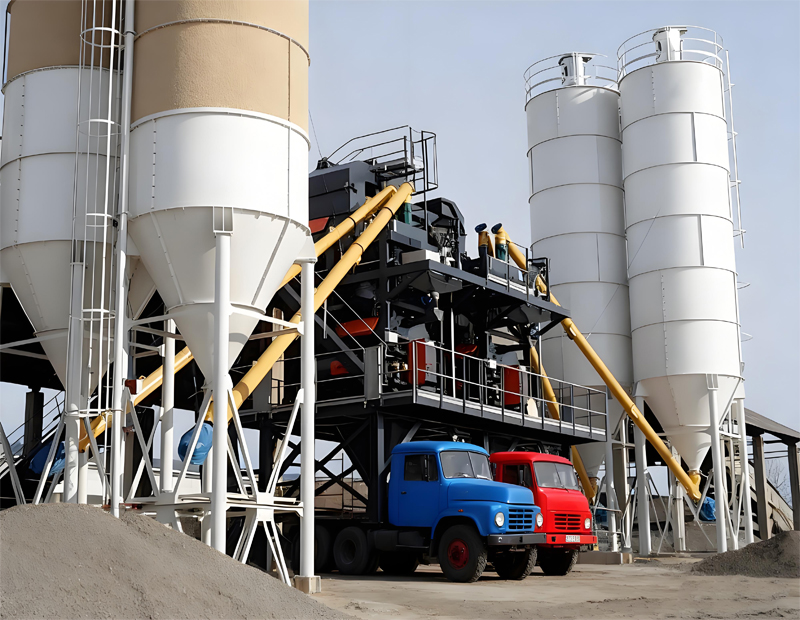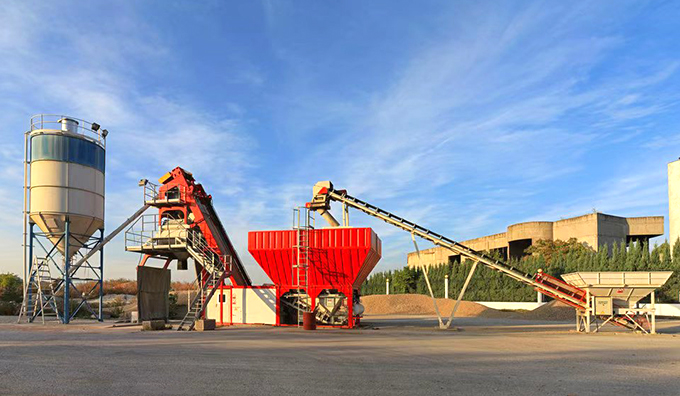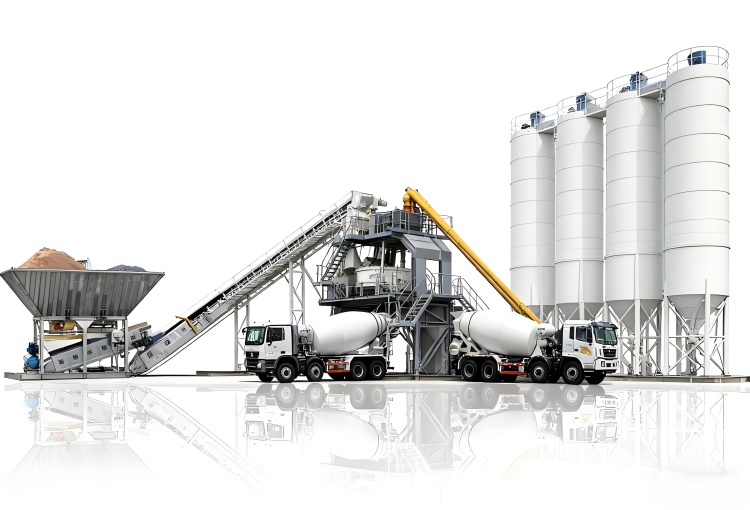1. The Global Evolution of Concrete Manufacturing
Concrete remains the most consumed construction material on Earth, yet the systems that produce it are evolving faster than ever. The integration of IoT (Internet of Things) technology into modern concrete batching plant operations has shifted the industry from manual supervision to intelligent, automated ecosystems.
Today, project owners across Asia, Europe, and the Americas are turning to smart concrete mixing plant technologies that enable remote control, predictive maintenance, and resource optimization. These digital systems connect every element—from aggregate hoppers to concrete batching plant control panel interfaces—creating a transparent and data-driven production environment.
Notably, the convergence of cloud computing, sensors, and AI algorithms allows manufacturers to achieve precision levels that were once impossible with traditional setups. The result: consistent quality, reduced waste, and measurable cost savings.
2. Why IoT Matters in Concrete Production
2.1 Tackling Industry Pain Points
For decades, batching operations relied heavily on manual monitoring and operator intuition. This led to inconsistent mix ratios, frequent downtime, and high maintenance costs. With IoT-enabled stationary concrete batching plant and mobile concrete batching plant systems, these inefficiencies are being systematically eliminated.
IoT brings several measurable advantages:
-
Real-time visibility into aggregate levels and cement flow
-
Automatic recalibration based on moisture and temperature sensors
-
Predictive fault detection in motors, belts, and mixers
-
Remote system diagnostics and cloud-based analytics dashboards
Interestingly, even compact models such as concrete batching plant mini units now come equipped with IoT interfaces, allowing small contractors to operate with the same precision as large-scale infrastructure projects.
3. Intelligent Control Systems: From Manual to Autonomous
3.1 The Role of Smart Control Panels
The heart of every IoT-powered batching system is its concrete batching plant control panel—now upgraded into a smart PLC (Programmable Logic Controller) environment.
This digital interface gathers real-time data from sensors across the concrete mixing batching plant and translates it into actionable instructions.
For example:
-
Automatic cement feeder adjustment based on moisture sensors
-
Adaptive mixing cycles responding to ambient temperature
-
Instant notifications for abnormal power fluctuations
A connected control panel improves consistency, reduces manual intervention, and integrates seamlessly with concrete batch plant software, allowing supervisors to manage multiple facilities from a single screen.
3.2 Remote Access and Cloud Integration
Through cloud-based connectivity, operators can now monitor batching performance from any device. This is particularly vital for construction firms running several precast concrete batching plant sites across different regions. Remote access reduces response time to mechanical issues, saving both fuel and downtime costs.
In fact, companies report up to a 25% increase in operational efficiency after implementing IoT-enabled systems, primarily due to better scheduling and reduced equipment idling.
4. Predictive Maintenance: The Core of Smart Plant Management
One of IoT’s most transformative features in the concrete mixing plant industry is predictive maintenance. Traditional maintenance schedules relied on routine checks or reactive repairs—often after costly breakdowns had already occurred.
IoT changes this model by continuously tracking machine health metrics such as vibration, temperature, and motor current. When anomalies are detected, the system triggers early warnings, allowing proactive part replacement.
For instance:
By integrating IoT with concrete batching plant parts tracking, companies can ensure replacement components are available before failures occur. As a result, unplanned downtime can be reduced by up to 40%.
5. Data-Driven Quality Control
5.1 Real-Time Calibration
Quality consistency remains a top priority for global contractors. IoT systems now allow concrete batching plant calibration to be performed automatically based on sensor input.
Moisture sensors inside aggregate bins transmit continuous data to the control system, which dynamically adjusts water flow and cement dosing to maintain exact mix proportions.
This automation guarantees that every cubic meter of concrete meets design specifications—critical for large-scale projects such as bridges, precast segments, and metro infrastructures.
5.2 Cloud-Based Reporting and Compliance
IoT systems also generate automated compliance reports. Whether it’s for ISO certification, national quality audits, or local environmental regulations, data logs from concrete batching plant layout software provide detailed proof of production accuracy.
Contractors can easily download mix records, production volumes, and energy usage summaries directly from their dashboards—eliminating manual recordkeeping errors and enhancing transparency.
6. Energy and Resource Optimization
Energy consumption and raw material waste are major operational costs. IoT technology optimizes both.
-
Load balancing algorithms distribute power efficiently across plant components.
-
Smart motor control ensures that conveyors and mixers only operate when required.
-
Material tracking reduces cement overuse through precise measurement sensors.
Interestingly, in modular and dry concrete batching plant systems, these optimizations have cut average energy use by 15% and water waste by 20%. For companies managing ready mix concrete plant networks, the savings translate to significant annual cost reductions.
Furthermore, some manufacturers now integrate IoT modules directly into dry mix mortar plant setups, giving material suppliers complete visibility into mix performance and logistics.
7. Environmental Sustainability Through IoT
IoT does not merely enhance efficiency—it actively supports sustainability initiatives. Modern concrete batching plant manufacturers are embedding emission control sensors and automated recycling systems into their smart designs.
7.1 Emission Monitoring
IoT sensors track dust particle density and gas emissions in real time. If pollution exceeds set limits, automated control systems activate air filtration units or halt specific operations.
These intelligent responses ensure that the concrete mixing plant complies with ISO 14001 and local environmental standards.
7.2 Waste and Water Recycling
Water runoff from washing aggregates and mixers is a major environmental concern. With IoT-driven flow monitoring, effluent water can be automatically recycled back into the system, cutting freshwater usage by 30–40%.
This level of control not only protects the environment but also improves project sustainability metrics—a growing requirement in government and private-sector tenders.
8. Smart Integration in Modular and Mobile Plants
IoT technology is particularly transformative in mobile concrete batching plant and modular concrete plant designs. These systems must maintain efficiency and accuracy even in temporary or remote construction sites.
IoT platforms synchronize material delivery, monitor generator output, and adjust dosing ratios automatically based on field conditions. This ensures consistent performance whether the plant is in urban Dubai or rural Kenya.
Moreover, modern stationary concrete batching plant models are now designed with modular IoT-ready frameworks, allowing hybrid configurations—fixed plants with detachable IoT-controlled modules for large infrastructure projects.
9. Cost and ROI Analysis
Implementing IoT in batching operations requires initial investment in sensors, controllers, and software. However, ROI studies consistently show payback within 12–18 months.
Cost Breakdown Example:
| Investment Category |
Approx. Cost (USD) |
ROI Contribution |
| IoT Sensors & PLC Upgrades |
$25,000 |
Reduced downtime |
| Cloud Software License |
$5,000/year |
Enhanced productivity |
| Predictive Maintenance Setup |
$8,000 |
Equipment longevity |
| Energy Optimization Modules |
$7,000 |
Lower power usage |
When compared to the concrete batching plant cost of traditional systems, IoT-based setups deliver up to 35% operational cost savings over five years.
Furthermore, integrating IoT analytics into concrete batch plant software enables better asset management—identifying underutilized resources and reallocating them across multiple projects for optimal ROI.
10. The Role of Global Manufacturers
Leading concrete batching plant manufacturers in China and Europe are investing heavily in IoT R&D. They are creating standardized platforms that can connect diverse plant models—whether it’s a precast concrete batching plant, a grout batching plant, or a volumetric concrete batching plant.
For example, smart interfaces now allow seamless synchronization between batching systems and transport fleets. The mix readiness data from a ready mix concrete plant near me is transmitted in real-time to truck dispatchers, ensuring delivery within ideal temperature and slump parameters.
This level of synchronization eliminates concrete waste and enhances customer satisfaction—both crucial for competitiveness in today’s construction markets.
11. Design and Layout Efficiency with IoT
The digitalization of design workflows is another emerging trend. Using IoT-compatible software, engineers can now simulate entire concrete batching plant layout drawing PDF files before actual installation.
This virtual planning identifies potential bottlenecks, optimizes conveyor paths, and fine-tunes aggregate flow—saving weeks of rework during plant commissioning.
As a result, modular setups and concrete mixing plant equipment can be configured 30% faster with fewer manual adjustments, improving construction project timelines dramatically.
12. Future Outlook: AI Meets IoT
The next evolution of batching plant technology will combine IoT data with artificial intelligence. AI algorithms will use the data collected from concrete batching plant types to predict material demand, optimize energy use, and autonomously adjust production parameters.
By 2030, industry forecasts predict that more than 70% of global concrete production will occur through smart, IoT-integrated systems.
The combination of AI and IoT is expected to reduce production variability to near zero, transforming the way concrete is mixed, transported, and placed worldwide.
Conclusion: Building the Future, One Smart Plant at a Time
The integration of IoT into concrete batching plant systems represents a defining moment for the construction industry. It’s no longer about producing concrete—it’s about producing data-driven efficiency, sustainability, and performance.
From mobile concrete batching plant setups in remote regions to stationary concrete batching plant networks supplying megacities, IoT enables smarter, cleaner, and more reliable concrete production.
Companies that adopt IoT-enabled solutions today are setting new standards for operational excellence. In fact, they’re not just mixing concrete—they’re mixing innovation into the very foundation of the modern built world.

